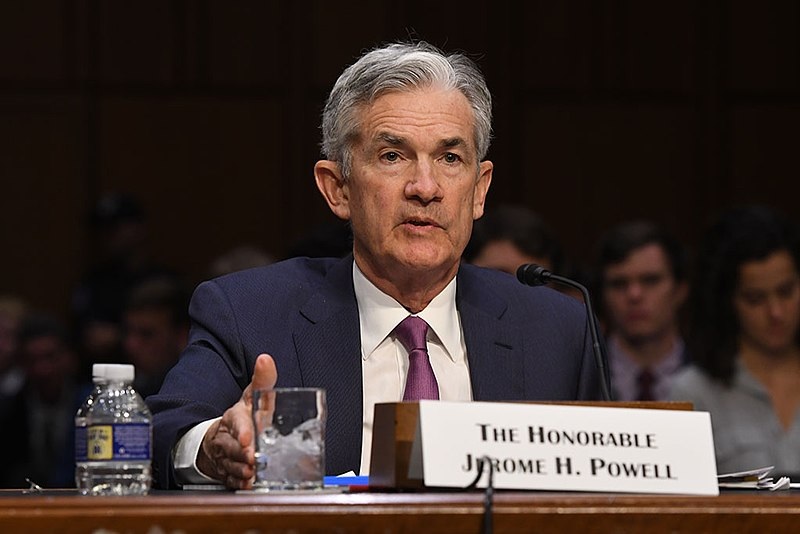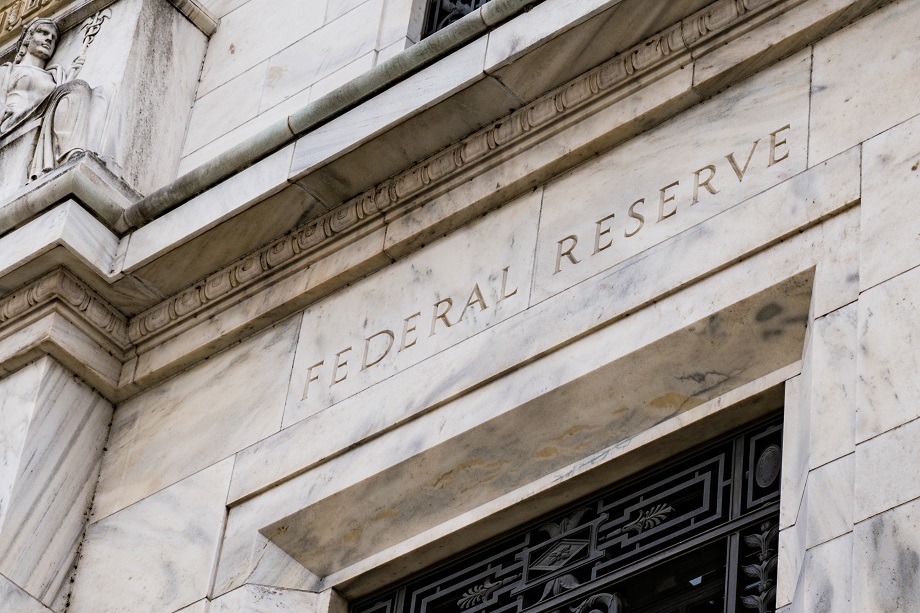economy breaking news
By Christopher Rugaber
Washington (AP) — Conflicting signs about the health of the U.S. economy have thrust the Federal Reserve into a difficult spot. breaking news
With inflation raging at a four-decade high, the job market strong and consumer spending still solid, the Fed is under pressure to raise interest rates aggressively.
But other signs suggest the economy is slowing and might even have shrunk in the first half of the year. Such evidence would typically lead the Fed to stop raising rates — or even cut them.
For now, though, the Fed is focused squarely on its inflation fight, and this week it’s set to announce another hefty hike in its benchmark interest rate. Together with its previous rate increases, the Fed’s moves will make borrowing costlier for individuals and companies and likely weaken the economy over time.
“Until there’s very clear evidence of the labor market beginning to meaningfully deteriorate, the No. 1 focus for the Fed must be inflation,” said Matthew Luzzetti, chief U.S. economist at Deutsche Bank.
When it ends its latest policy meeting Wednesday, the Fed is expected to impose a second consecutive three-quarter-point hike, elevating its key rate to a range of 2.25% to 2.5%. It will be its fourth rate hike since March, when it announced a quarter-point increase. Since then, with inflation setting new four-decade highs, the central bank has tightened credit ever more aggressively.
By raising borrowing rates, the Fed makes it costlier to take out a mortgage or an auto or business loan. In turn, consumers and businesses will likely borrow and spend less, cooling the economy and slowing price increases. The Fed’s hikes have already led to a doubling of the average rate on a 30-year fixed mortgage in the past year, to 5.5%, and home sales have tumbled. The central bank is betting it can slow growth just enough to tame inflation yet not so much as to trigger a recession — a risk that many analysts fear may end badly.
economy breaking news
The Fed’s rate hikes aren’t suited to address all the causes of high inflation. Higher borrowing rates can reduce spending. But they cannot reverse other factors, notably the global shortages of food, energy, factory parts and other items, which have been worsened by Russia’s war against Ukraine and COVID-19-related shutdowns in China.
It will also likely take months for the Fed’s higher rates to reduce spending on airline flights, restaurant meals and other services. Many economists worry that this means the Fed will have to clamp down even harder on consumer and business demand, to bring it into balance with the economy’s restricted supply of goods and labor.
A news conference that Chair Jerome Powell will hold Wednesday — and whatever signals, if any, he sends about the Fed’s next steps — will draw intense interest. Since the Fed met in June, the government has reported that inflation accelerated to a 9.1% annual rate, the most since 1981. Though that jump reflected a spike in gas prices, which have since declined, inflation worsened even after excluding the volatile energy and food categories.
The nation’s June jobs report showed that hiring has remained healthy, with employers adding 372,000 jobs last month. Employers’ continued need for labor has been elevating wages and contributing to inflation as companies pass their higher labor costs on to customers in the form of price increases.
Oddly enough, though, despite the robust job market and its role in keeping inflation high, by some measures the economy is barely growing, if at all. When the government reports Thursday on growth in the April-June period, it may show that the economy shrank for a second consecutive quarter.
economy breaking news
Though two straight quarters of negative growth are sometimes seen as an informal definition of recession, few economists think the economy is in a downturn. Instead, recessions are defined by the National Bureau of Economic Research, a nonprofit group of economists. The NBER assesses a broad range of data in determining recessions and places heavy weight on incomes and jobs. Economists note that employers have added 2.7 million jobs so far this year, which points to an economy far from recession.

If, as expected, the Fed raises its short-term rate this week to 2.25% to 2.5%, it would move it near a level that officials think neither stimulates nor discourages growth. After that, the policymakers could raise the rate in smaller increments to levels that would slow the economy. Fed officials have signaled that they expect to raise it to a range of 3.25% to 3.5% by year’s end.
On Wednesday, Powell is expected to hammer home the Fed’s determination to raise rates until inflation falls, even at the risk of slowing growth too much.
“What we’re looking for is compelling evidence that inflationary pressures are abating and that inflation is moving back down,” he said at a news conference after the Fed’s June meeting. “We’d like to see that in the form of a series of declining monthly inflation readings.”
At a central banking forum last month in Portugal, Powell added: “Is there a risk that we would go too far? Certainly there’s a risk, but I wouldn’t agree that’s the biggest risk to the economy. The biggest mistake to make…would be to fail to restore price stability.”
Other officials have made clear they expect the Fed to continue raising rates for the foreseeable future.
“I have not seen any convincing evidence that inflation has turned the corner,” said Loretta Mester, president of the Federal Reserve Bank of Cleveland, earlier this month.
Still, the economy’s conflicting signals have whiplashed Fed policy for months, leaving many analysts calling for a clearer message. In June, policymakers had signaled that a half-point rate hike was likely — until just before their meeting, when expectations abruptly shifted to a three-quarter-point increase.
And after the June inflation report showed that price increases were accelerating, Wall Street traders bet that the Fed would impose a full percentage point hike this week. That expectation, too, faded after several Fed officials dismissed the idea. The rapid swing in expectations was “borderline ridiculous,” Krishna Guha, an economist at Evercore ISI, an investment bank, wrote to clients.
The policymakers should “lay out the thinking a little bit more of how they see the pace of rate increases going forward,” said Ellen Meade, an economics professor at Duke University and a former senior Fed economist. “Will they react to a dramatic slowing in the economy if that should occur before they see inflation slow in a meaningful way? Having a little more information as to how they’re thinking about it could be helpful.”
The Associated Press & the Canadian Press. All rights are reserved.
economy breaking news
Notes from APS Radio News
During the past few years, a number of the world’s central banks have engaged in massive programs of monetary expansion, even as jobs and businesses were lost by way of virus-related restrictions and quarantines.
For example, beginning in March of 2020, the US Federal Reserve engaged in a substantially greater program of monetary expansion by purchasing hundreds of billions of dollars of Treasury and corporate bonds.
Since the early part of March 2020 to date, the Federal Reserve has added over $4 trillion to its holdings.
In particular, whereas on or about February 24, 2020, the holdings of the Federal Reserve stood at $4.2 trillion, on or about January 17, 2022, the holdings of the Federal Reserve stood at about $8.9 trillion.
economy breaking news
As well, the Federal Reserve has kept interest rates low.
Recently, Jerome Powell, the head of the Federal Reserve, said that he wasn’t concerned about inflation and that, for the none, the Federal Reserve would keep interest rates at low levels.
Another examples is that of the Bank of Japan.
According to Fred Economic Data, as of October 2021, the Bank of Japan’s holdings were about $6.4 trillion or about 725 trillion Yen.
In the early part of March 2020, the Bank of Japan’s holdings were $5.3 holdings. During the period mentioned, the Bank of Japan added over one trillion dollars to its holdings.
A number of corporations have been borrowing money inexpensively and have been purchasing their own shares of stocks, increasing share prices of stocks.
Still, there are concerns among investors.
A number of them have expressed concerns about central banks’ eventually increasing interest rates, as, during the past year, inflation levels have been increasing.
The combination of low interest rates, expansive monetary policies, fiscal stimulus programs, which themselves have infused trillions into the US economy, and shortages of goods and services caused by virus-related restrictions and lockdowns has increased levels of inflation.
Investors also have worried, for example, about announcements that were made by companies like Toyota and VW; months ago, those companies announced that because of shortages of particular types of material, they would be reducing levels of production.
Months ago, the results of a survey of UK manufacturers were released.
That survey indicated that many businesses in the UK were concerned about shortages of supplies.
In general, jobs and businesses have been lost by way of mandates, restrictions and quarantines, which, in their turn, were imposed by way of the virus narrative.
In the US, overall, the mortality rate of the virus is about .069%, according to Statista, an award-winning service.
The recovery rate is over 99% for most age groups.
What has followed in the wake of lockdowns and mandates has been the infusion of trillions of dollars into the US economy, the increasing succeess of online businesses like Amazon and other large online retailers, various bank and tech-related stocks, the shuttering of small to medium-sized businesses and the loss of millions of jobs.
Another result has been the increasing levels of inflation, especially those of food and fuel.
In official terms, for purposes of reporting, the US Labor Department uses what is called “core inflation”.
Core inflation excludes items like food and fuel, as those are deemed too volatile.
economy breaking news


